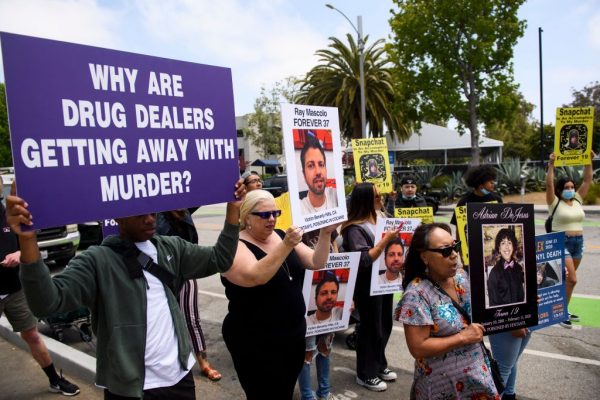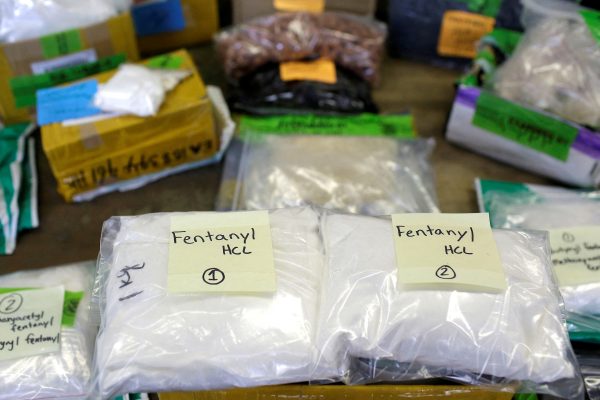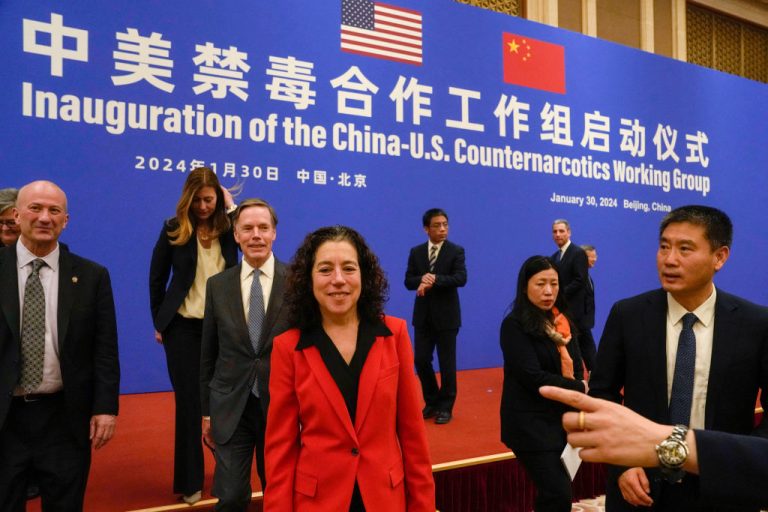In what could be a step towards repairing simmering Sino-American tensions, U.S. and Chinese officials have reportedly engaged in “high-level talks” focusing on the heightened fentanyl crisis.
The discussions, which were held over two days in Beijing beginning on Jan. 30, represent the first formal engagement between the two global powers on the issue in years — highlighting the urgency of addressing a drug epidemic that has ravaged hundreds of communities across the U.S.
RELATED: Thousands of ‘Rainbow Fentanyl’ Pills Seized by US Customs
Jen Daskal, Deputy Homeland Security Advisor and head of the White House delegation, described the meetings with the newly-formed counternarcotics team as “an important step forward in our relationship.” The meetings come at a time of strained relations between the U.S. and China, marred by disputes over trade, technology, human rights, and the status of Taiwan.
Despite being a self-ruling nation with its own democratic government, the mainland Chinese regime claims Taiwan as a rightful part of its territory — vowing to reclaim the island by any means necessary, even if that means resorting to military force.

Success
You are now signed up for our newsletter
Success
Check your email to complete sign up
“What we hope [to see] today will be to launch continued cooperation so that we can share information and see more progress,” said Daskal as she emphasized the need for ongoing collaboration between the two governments to combat the crisis.
Boiling point
The fentanyl issue has reached a critical point in the U.S., with over 80,000 overdose deaths involving synthetic opioids in 2021. According to the Centers for Disease Control and Prevention (CDC), the majority of these overdoses were linked to fentanyl. The synthetic opioid, known for its extreme potency and addictive properties, has become a central figure in the “worst drug crisis” the country has faced.
While China has taken steps to address the issue — including classifying all fentanyl variants as controlled substances in 2019 and curbing the flow of finished fentanyl to the U.S — it needs to do more to avert the crisis, says Daskal. She further added that China remains a “primary source” of precursor chemicals that are used to make fentanyl synthesis, predominantly by Mexican drug cartels.
The revival of U.S.-China counternarcotics cooperation comes on the heels of a November meeting between President Joe Biden and Chinese President Xi Jinping. Following a temporary suspension of cooperation in August 2022, China has re-commenced “sharing information on suspicious shipments” and trafficking with the International Narcotics Control Board. It also warned domestic companies against illegal sales of precursor chemicals.

Despite these efforts, Daskal believes there is more to be done. “We will know if it works if we start seeing the supply of precursor drugs diminish,” she said, adding that both governments must recognize the “intertwined nature of supply and demand.” Daskal also emphasized the distinct challenge presented by fentanyl by highlighting how traffickers fuel demand by lacing it with other drugs — thereby creating a cycle of addiction.
Yu Haibin, a top Chinese narcotics control official, countered the U.S. perspective — suggesting instead that the roots of the fentanyl crisis lie within U.S. soil. “The fentanyl crisis in the United States is not manufactured by China; its roots lie within the country itself,” he said.
RELATED: US Prosecutors Indict Chinese Fentanyl Precursor Manufacturers
The bottom line
Yu’s sentiment was echoed by Vanda Felbab-Brown, a senior fellow at the Brookings Institution, a Washington D.C-based think-tank that specializes in research and economics. “We have to recognize the dual-use nature of many precursor chemicals and the challenges in restricting them,” said Felbab-Brown.
She also underscored the need for China to include more stringent restrictions such as the “Know Your Customer” (KYC) measures that aim to share U.S. intel on organized crime groups and facilitate the prosecution of companies selling illegal chemicals.

Despite these challenges, Felbab-Brown sees potential in the renewed cooperation — estimating the likelihood of “significant progress” in tackling the surging crisis. She also highlighted the importance of cooperation with Mexico, noting the collaboration between Mexican President Andrés Manuel López Obrador and U.S. border patrol.
As the meetings draw to a close, the focus now shifts to translating dialogue into action. But the success of these efforts hinge not only on the commitment of the U.S. and China, but also on broader dynamics and the involvement of key players like Mexico in stopping the cycle of this deadly drug epidemic.
“We have to take it step-by-step,” said Daskal, adding, “We’re going to continue to look for action that follows on the conversations.”















